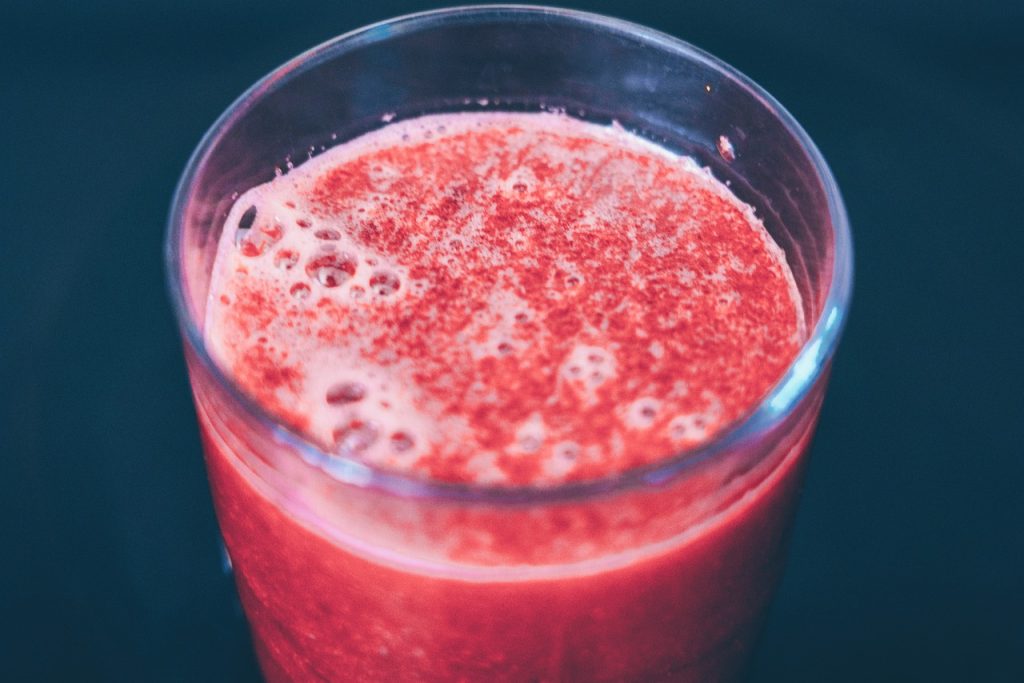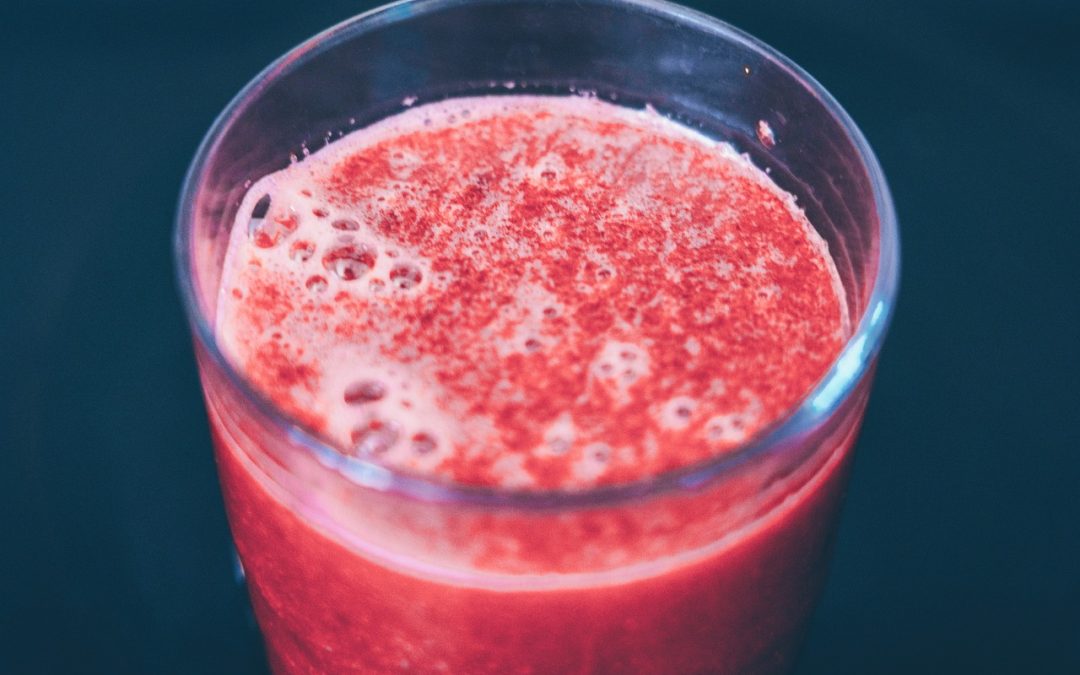Imagine feeling refreshed and rejuvenated, with a newfound energy coursing through your veins. The ultimate guide to naturally detoxifying your body holds the key to achieving this state of pure vitality. Say goodbye to harmful toxins and hello to a healthier, more vibrant you. With simple yet effective techniques, you’ll learn how to cleanse your body naturally, promoting optimal wellness from the inside out. Embark on this transformative journey and unlock the secrets to purifying your body, restoring balance, and embracing a renewed sense of well-being.
Water
Importance of drinking water
Drinking water is essential for maintaining overall health and well-being. It helps to flush out toxins, aid in digestion, regulate body temperature, and support various bodily functions. Water is also important for skin health, as it helps to hydrate and nourish the skin, promoting a healthy complexion. Lack of proper hydration can lead to dehydration, which can cause fatigue, dizziness, and even more serious health issues. By ensuring you drink an adequate amount of water each day, you can effectively detoxify your body and promote optimal wellness.
How much water to drink
The amount of water you need to drink daily depends on various factors such as your body weight, activity level, and climate. However, a general guideline is to consume at least 8 glasses or 64 ounces of water per day. This amount can vary for individuals, so it’s important to listen to your body and drink when you feel thirsty. Remember that certain factors, such as intense physical activity, hot weather, or illness, may increase your water needs. It’s always best to consult with a healthcare professional to determine the right amount of water intake for your specific needs.
Tips for increasing water intake
Increasing your water intake can sometimes be a challenge, especially if you’re not used to consuming large amounts of water. However, there are several tips and tricks you can incorporate into your daily routine to help increase your water intake:
-
Carry a reusable water bottle: Having a water bottle with you at all times makes it easier to remember to drink water throughout the day. Opt for a reusable bottle to reduce plastic waste and ensure you always have water readily available.
-
Set reminders: Use your phone or a calendar app to set reminders throughout the day to drink water. This can help you develop a habit of staying hydrated.
-
Infuse your water: Add slices of fruits or herbs to your water for a burst of flavor. This can make drinking water more enjoyable and encouraging.
-
Try sparkling water or herbal tea: If you find plain water boring, incorporate sparkling water or herbal tea into your hydration routine. These alternatives still provide hydration while adding some variety to your beverages.
Remember, water is the best choice for hydration, but other liquids like herbal tea, infused water, or fresh fruit juices can also contribute to your overall water intake. Find what works best for you and make staying hydrated a priority for a naturally detoxified body.
Fruits and Vegetables
Benefits of fruits and vegetables for detoxification
Fruits and vegetables are rich in essential nutrients, antioxidants, and dietary fibers that play a crucial role in supporting the body’s natural detoxification process. They provide the necessary vitamins and minerals needed for optimal functioning of organs such as the liver, kidneys, and colon, which are responsible for detoxifying and eliminating toxins from the body. These nutrient-dense foods also help to promote healthy digestion, boost the immune system, and nourish the skin.
Best fruits and vegetables for detoxification
When it comes to detoxifying your body, certain fruits and vegetables are particularly beneficial due to their specific detoxifying properties. Some of the best options include:
-
Leafy greens: Spinach, kale, and Swiss chard are excellent choices as they are packed with chlorophyll, which helps to remove harmful toxins and heavy metals from the body.
-
Citrus fruits: Lemons, grapefruits, and oranges are high in vitamin C and antioxidants, which support liver function and promote the production of glutathione, a powerful detoxifying agent.
-
Cruciferous vegetables: Broccoli, cabbage, and cauliflower contain sulfur compounds that aid in detoxification and support the liver’s detoxifying enzymes.
-
Berries: Blueberries, raspberries, and strawberries are rich in antioxidants, vitamins, and fiber, which help to eliminate toxins and protect against cellular damage.
-
Garlic: Known for its potent detoxifying properties, garlic helps to activate liver enzymes responsible for filtering out toxins from the body.
Incorporating more fruits and vegetables in your diet
To increase your intake of fruits and vegetables and harness their detoxifying benefits, consider the following tips:
-
Experiment with smoothies: Blend a variety of fruits and leafy greens with a liquid base such as almond milk or coconut water to create delicious and detoxifying smoothies. This way, you can easily incorporate several servings of fruits and vegetables into your daily routine.
-
Make salads a staple: Add a colorful mix of vegetables and fruits to your salads to make them more enticing and nutritious. Try combining leafy greens, cucumbers, tomatoes, berries, and citrus slices for a refreshing and detoxifying meal.
-
Snack on raw fruits and veggies: Keep cut-up fruits and veggies easily accessible in your refrigerator for a quick and healthy snack option throughout the day. Carrot sticks, bell pepper slices, and apple wedges are all great choices.
-
Incorporate fruits and vegetables into your meals: Add a side of steamed or roasted vegetables to your main dishes or include fruits as dessert or in smoothie bowls. By incorporating them into every meal, you can ensure a consistent intake.
Remember to choose organic produce whenever possible to minimize exposure to pesticides and maximize their nutritional content. Aim to consume a variety of colors and types of fruits and vegetables to get a wide range of beneficial nutrients for detoxification and overall health.

Herbal Teas
Benefits of herbal teas for detoxification
Herbal teas have been used for centuries as natural remedies for a wide range of health issues, including detoxification. They are packed with antioxidants, phytochemicals, and other compounds that support the body in eliminating toxins, boosting the immune system, and promoting overall well-being. The gentle yet effective nature of herbal teas makes them a popular choice for those seeking a natural approach to detoxifying the body.
Different types of herbal teas and their detoxifying properties
There are several types of herbal teas known for their detoxifying properties. Here are a few popular options and their specific benefits:
-
Dandelion tea: Dandelion tea helps to cleanse and support the liver, as it stimulates the production of bile, which aids in the breakdown of fats and the elimination of toxins from the body.
-
Milk thistle tea: Milk thistle is known for its liver-protective properties. The tea made from its seeds promotes liver detoxification, reduces inflammation, and supports overall liver health.
-
Ginger tea: Ginger has anti-inflammatory properties and aids in digestion, making it beneficial for detoxification. It can help to soothe the digestive system, reduce bloating, and promote healthy bowel movements.
-
Peppermint tea: Peppermint tea has a calming effect on the digestive system, assisting with digestion and reducing bloating. It also has antispasmodic properties that help to relax the muscles of the gastrointestinal tract.
-
Green tea: Green tea is rich in antioxidants called catechins, which help to eliminate free radicals and protect cells from damage. The compounds in green tea also promote healthy liver function and support detoxification.
How to prepare and consume herbal teas for detoxification
Preparing herbal teas for detoxification is simple and can be done in just a few steps:
-
Bring water to a boil: Boil fresh, filtered water in a kettle or pot. The amount of water will depend on how many cups of tea you wish to make.
-
Add herbs: Place your chosen herbal tea blend or tea bag in a teapot or mug. Use one tea bag or one tablespoon of loose-leaf tea per cup of water.
-
Pour boiling water: Pour the boiling water directly over the herbs or tea bags in the teapot or mug.
-
Steep: Let the herbs steep in hot water for about 5-10 minutes, or as directed on the packaging. This allows the water to extract the beneficial compounds from the herbs.
-
Strain and enjoy: Remove the tea bags or strain the tea to separate any loose herbs. Pour the tea into a cup and enjoy while it’s still warm.
To reap the full detoxifying benefits, aim to drink herbal teas 2-3 times a day. You can adjust the strength of the tea by steeping it for a longer or shorter period, depending on your taste preferences. Herbal teas can be enjoyed plain or sweetened with natural sweeteners like honey or Stevia.
Juices and Smoothies
Benefits of juices and smoothies for detoxification
Juices and smoothies can be powerful tools for naturally detoxifying your body. Packed with vitamins, minerals, and antioxidants, these beverages provide a concentrated dose of nutrients that support the detoxification process. Juicing and blending fruits and vegetables also make their nutrients more easily absorbed by the body, allowing for maximum benefits.
Recipes for detoxifying juices and smoothies
When it comes to creating detoxifying juices and smoothies, the key is to include a variety of fruits, vegetables, and other nutritious ingredients. Here are a few recipes to get you started:
-
Green Detox Juice
-
Ingredients:
- 1 cucumber
- 2 cups spinach
- 2 green apples
- 1 lemon, peeled
- 1-inch piece of ginger
-
Instructions:
- Wash and prepare all the ingredients.
- Run them through a juicer.
- Stir the juice well and pour it into a glass.
- Consume immediately for maximum freshness and nutrient content.
-
-
Berry Detox Smoothie
-
Ingredients:
- 1 cup mixed berries (strawberries, blueberries, raspberries)
- 1 banana
- 1 cup spinach
- 1 cup almond milk or coconut water
- 1 tablespoon chia seeds
- Optional: 1 tablespoon almond butter or hemp seeds for added protein
-
Instructions:
- Place all the ingredients in a blender.
- Blend until smooth and creamy.
- Pour into a glass and enjoy immediately.
-
-
Citrus Turmeric Cleanser Juice
-
Ingredients:
- 2 oranges
- 1 grapefruit
- 1 lemon
- 1-inch piece of turmeric root
- 1 tablespoon raw honey (optional)
-
Instructions:
- Peel and segment the oranges, grapefruit, and lemon.
- Peel the turmeric and roughly chop it.
- Add the citrus segments and turmeric to a juicer.
- Stir in the raw honey if desired.
- Mix well and serve chilled.
-
Feel free to customize these recipes based on your taste preferences and ingredient availability. If you don’t have a juicer, you can use a blender and strain the mixture through a nut milk bag or cheesecloth to remove any pulp.
Incorporating juices and smoothies into your daily routine
To make juicing and smoothies a regular part of your detoxification routine, consider the following tips:
-
Plan ahead: Set aside time each week to plan your fruit and vegetable purchases and create a shopping list. Having fresh produce on hand will make it easier to whip up juices and smoothies whenever you need them.
-
Batch prep: If time is limited, consider prepping your ingredients in advance. Wash, chop, and portion out fruits and vegetables for multiple servings of juices and smoothies. This way, all you need to do is grab the prepped ingredients and blend or juice them on the spot.
-
Replace a meal: To fully benefit from the detoxifying effects of juices and smoothies, consider replacing one meal a day with a nutrient-packed concoction. This can help kickstart your body’s detoxification process and provide a break for your digestive system.
-
Customize to your needs: Depending on your specific health goals, you can add ingredients like fresh herbs, ginger, or superfood powders to enhance the detoxifying properties of your juices and smoothies. Experiment with different combinations to find what works best for you.
Remember to listen to your body and enjoy these beverages mindfully. While they provide a concentrated dose of nutrients, it’s important to still consume a balanced diet that includes whole foods and other sources of essential nutrients.

Exercise
Importance of exercise for detoxification
Exercise plays a crucial role in the body’s natural detoxification process. When you engage in physical activity, you increase blood circulation, stimulate the lymphatic system, and promote sweating. These mechanisms help to eliminate toxins, waste products, and stagnant fluids from the body, enhancing overall detoxification and improving your overall health.
Types of exercises that aid in detoxification
-
Cardiovascular exercises: Activities such as running, biking, swimming, or high-intensity interval training (HIIT) get your heart rate up and increase blood flow. This helps deliver oxygen and nutrients to your cells, while carrying away toxins and waste products.
-
Strength training: Resistance exercises like weightlifting or using resistance bands build muscle, which enhances metabolism and helps the body burn fat more efficiently. This can aid in the release of stored toxins that are stored in fat cells.
-
Yoga and stretching: Practices like yoga, Pilates, or stretching routines help improve flexibility, release tension, and stimulate blood flow. Certain yoga poses, such as twists and inversions, specifically target the organs involved in detoxification, supporting their optimal functioning.
-
Breathwork: Deep breathing exercises like pranayama or diaphragmatic breathing can help improve oxygenation, promote relaxation, and support the elimination of toxins through the breath.
Creating an exercise routine for detoxification
To incorporate exercise into your detoxification routine, consider the following tips:
-
Set realistic goals: Start with small, achievable goals and gradually increase the intensity and duration of your workouts. Aim for at least 150 minutes of moderate-intensity aerobic activity or 75 minutes of vigorous aerobic activity per week, along with strength training exercises twice a week.
-
Find activities you enjoy: Choose exercises and activities that you genuinely enjoy as it will make it easier to stick to your routine. Whether it’s dancing, hiking, swimming, or playing a sport, engaging in activities you love will make the detoxification process more pleasurable.
-
Mix it up: Incorporate a variety of exercises into your routine to keep things interesting and engage different muscle groups. This can help prevent boredom and ensure you’re targeting all areas of your body for detoxification.
-
Stay hydrated: During exercise, it’s important to replenish the fluids lost through sweating. Drink water before, during, and after your workouts to stay properly hydrated and support the body’s natural detoxification process.
-
Listen to your body: Pay attention to how your body feels during and after exercise. If you experience pain or discomfort, modify or adjust your routine accordingly. It’s important to push yourself while honoring your limits to avoid injury and promote overall well-being.
Remember, exercise is just one piece of the detoxification puzzle. Combining regular physical activity with other detoxification practices, such as a healthy diet and proper hydration, will yield optimal results for cleansing your body naturally.
Dry Brushing
Benefits of dry brushing for detoxification
Dry brushing is a simple and effective technique for detoxifying the body and improving the health of your skin. By using a dry brush made of natural bristles, you can stimulate the lymphatic system, enhance circulation, and exfoliate the outer layer of your skin. These actions help to remove dead skin cells, promote the elimination of toxins, activate the sweat glands, and encourage the absorption of nutrients from moisturizers and oils.
How to properly dry brush your body
To effectively dry brush your body, follow these steps:
-
Choose the right brush: Select a brush specifically designed for dry brushing, preferably one with natural bristles. Avoid brushes with synthetic bristles or those too stiff, as they can be too harsh on your skin.
-
Begin with dry skin: Dry brushing should be done on dry skin, preferably before showering. Start at your feet and work your way upward, brushing towards your heart in long sweeping motions. Use light pressure to avoid damaging or irritating your skin.
-
Brush in the right direction: Always brush towards the heart to support lymphatic flow and blood circulation. For example, when brushing your legs, brush upward toward your groin area.
-
Brush each area several times: Focus on each area of your body, brushing it several times before moving on to the next. Be more gentle on sensitive areas like the chest or neck.
-
Pay attention to pressure and sensitivity: Be mindful of the pressure you apply during dry brushing. You should feel a gentle stimulation, but it shouldn’t be painful or cause any discomfort. Adjust the pressure accordingly to match your comfort level.
-
Shower after dry brushing: After completing your dry brushing session, it’s a good idea to take a shower to rinse off any dead skin cells that have been loosened. Follow up with a moisturizer to hydrate your skin.
-
Clean and care for your brush: Clean your dry brush regularly by gently washing it with mild soap and water. Allow it to air dry completely before using it again.
Incorporating dry brushing into your skincare routine
To make dry brushing a regular part of your skincare routine, consider the following tips:
-
Frequency: Aim to dry brush your body 2-3 times per week, or as tolerated by your skin. Avoid dry brushing over areas of dry, broken, or sunburned skin.
-
Timing: Dry brushing can be done any time of the day, but many people find it beneficial to do it in the morning to invigorate and energize the body. Others prefer to do it in the evening to promote relaxation and prepare for sleep.
-
Post-brushing care: After dry brushing, be sure to nourish your skin with a moisturizer or body oil. This can help soothe and hydrate the skin, especially after the exfoliation process.
-
Be consistent: Like any skincare routine, consistency is key. Incorporate dry brushing into your routine consistently to allow your body to experience the full benefits over time.
Dry brushing is a gentle and invigorating practice that can enhance your detoxification routine and improve the appearance and health of your skin. With regular dry brushing, you may notice improved circulation, smoother skin texture, and a renewed sense of vitality.

Sweating
How sweating helps in detoxification
Sweating is one of the body’s natural mechanisms for eliminating toxins and waste products. When you sweat, the pores in your skin open up, allowing toxins to be released through perspiration. Sweating also helps regulate body temperature and can aid in the elimination of heavy metals, pollutants, and other harmful substances from the body. By promoting sweating, you can support your body’s detoxification process and boost overall well-being.
Ways to induce sweating
-
Physical activity: Engaging in moderate to vigorous exercise is an effective way to induce sweating. Cardiovascular exercises, high-intensity interval training (HIIT), or activities such as jogging, cycling, or dancing can help get your heart rate up and stimulate perspiration.
-
Saunas and steam rooms: Spending time in a sauna or steam room is a popular method for inducing sweating. The high temperatures and humidity in these environments cause the body to sweat profusely, helping to eliminate toxins through the skin.
-
Hot baths: Taking a hot bath can also promote sweating. Add Epsom salts or essential oils known for their detoxifying properties, such as lavender or tea tree oil, to enhance the detoxification effect.
-
Spicy foods: Consuming spicy foods like chili peppers or adding spices such as cayenne pepper or turmeric to your meals can increase body heat and stimulate sweating.
-
Warm compresses: Applying a warm compress or hot towel to specific areas of your body can help induce sweating in targeted areas. This can be particularly useful for localized detoxification or relief from muscle tension.
It’s important to remember to hydrate properly when inducing sweating, as you’ll be losing fluids in the process. Drink plenty of water before and after sweating to maintain adequate hydration levels and support your body’s natural detoxification process.
Incorporating activities that promote sweating in your daily life
To incorporate sweating-inducing activities into your daily life, consider these suggestions:
-
Workout regularly: Incorporate regular physical activity into your routine, such as jogging, cycling, or dancing. Aim for at least 30 minutes of moderate-intensity exercise most days of the week to support sweating and overall detoxification.
-
Schedule sauna sessions: If possible, allocate time for sauna sessions at a gym, spa, or wellness center. Make it a regular part of your self-care routine to promote sweating and relaxation.
-
Enhance your baths: Take advantage of warm baths by adding natural ingredients known to induce sweating, like Epsom salts or essential oils. Make it a soothing ritual to incorporate into your weekly routine.
-
Experiment with spices: Add spices like cayenne pepper, ginger, or turmeric to your meals to naturally increase body heat and stimulate sweating. Experiment with different recipes and cuisines to incorporate these beneficial spices into your cooking.
-
Practice hot yoga: Hot yoga classes, such as Bikram or heated Vinyasa, are conducted in a warm room to make participants sweat more. These classes not only promote flexibility and relaxation but also support detoxification through sweating.
Remember, sweating is a natural and beneficial process for detoxification. Incorporating activities that encourage sweating into your routine can help support the body’s natural detoxification process and promote overall health and well-being.
Saunas
Benefits of saunas for detoxification
Saunas have long been recognized for their detoxification benefits. The high temperatures in saunas cause the body to sweat profusely, helping to eliminate toxins and waste products through the skin. This process can aid in the removal of heavy metals, pollutants, and other harmful substances, promoting overall detoxification and improved health. Sauna use is also known to relax muscles, reduce stress, improve circulation, and enhance overall well-being.
Different types of saunas and their detoxifying effects
-
Traditional saunas: Traditional saunas, also known as dry saunas, use heated rocks or panels to produce high temperatures. These saunas typically operate at temperatures between 170 and 190°F (77 and 88°C). The dry heat helps to open the pores and induce sweating, facilitating the release of toxins from the body.
-
Infrared saunas: Infrared saunas use infrared heaters to emit radiant heat, which penetrates deep into the body’s tissues. Unlike traditional saunas, infrared saunas operate at lower temperatures around 120-150°F (49-66°C). The radiant heat directly heats the body, causing an increase in core temperature and promoting sweating.
-
Steam rooms: Steam rooms, also known as wet saunas, involve lower temperatures (around 110-120°F or 43-49°C) and higher humidity levels. The steam and moisture create a moist heat environment, encouraging sweating and helping to cleanse the skin and respiratory system.
The choice of sauna type depends on personal preference, availability, and health considerations. All types of saunas can provide detoxification benefits, and it’s important to adapt the experience to your comfort levels and overall health.
How to safely use a sauna for maximum benefits
To safely use a sauna and maximize its detoxification benefits, follow these guidelines:
-
Stay hydrated: It’s essential to drink water before, during, and after a sauna session to stay properly hydrated. The intense sweating can lead to a significant loss of fluids, so rehydration is crucial.
-
Limit session duration: Start with shorter sessions of around 10-15 minutes and gradually increase the duration as tolerated by your body. Avoid spending excessive amounts of time in the sauna to prevent overheating or dehydration.
-
Take breaks: It’s important to take breaks between sauna sessions to allow your body to cool down and rest. Cool down periods can last for around 10-15 minutes, during which you can hydrate and relax before returning to the sauna.
-
Listen to your body: Pay attention to how your body feels during sauna sessions. If you feel uncomfortable, lightheaded, or overly fatigued, exit the sauna immediately and cool down. Saunas should enhance your well-being, not compromise it.
-
Shower after the sauna: After a sauna session, take a cool shower to rinse off sweat and prevent your pores from becoming clogged. This can help enhance the detoxification process and leave you feeling refreshed.
-
Avoid saunas if pregnant or with certain health conditions: Pregnant women, individuals with cardiovascular issues, low blood pressure, or certain skin conditions, and those taking medication that affects sweating should consult with a healthcare professional before using saunas.
-
Consider professional guidance: If using a public sauna facility or trying a new type of sauna for the first time, it can be helpful to seek advice from a trained professional. They can provide guidance on sauna usage, session duration, and appropriate temperatures.
Remember, saunas are not a one-size-fits-all solution and may not be suitable for everyone. It’s crucial to listen to your body, practice moderation, and prioritize your safety and well-being when engaging in sauna sessions.

Deep Breathing
Benefits of deep breathing for detoxification
Deep breathing is a simple yet powerful technique that can support your body’s natural detoxification process. When you practice deep breathing, you engage the diaphragm, allowing for a fuller exchange of oxygen and the release of carbon dioxide. This deepens your breath and improves oxygenation throughout your body, including your cells and tissues. This enhanced oxygenation aids in detoxification by supporting cellular metabolism, optimizing organ function, and promoting overall well-being.
Breathing exercises for detoxification
Try incorporating the following breathing exercises into your daily routine to support detoxification:
-
Diaphragmatic breathing: Also known as belly breathing or deep breathing, this technique involves breathing deeply into your abdomen rather than shallowly into your chest. Place one hand on your abdomen and the other on your chest. Inhale deeply through your nose, allowing your abdomen to rise as you fill your lungs with air. Exhale slowly through your mouth, visualizing any tension or toxins leaving your body. Repeat for several minutes, focusing on slow and controlled breaths.
-
Alternate nostril breathing: This yogic breathing technique helps balance the energy in your body and promotes detoxification. Sit comfortably and use your right thumb to close your right nostril. Inhale deeply through your left nostril. After a full inhalation, close your left nostril with your ring finger, release your right nostril, and exhale slowly through the right nostril. Inhale through the right nostril, close it with your thumb, release your left nostril, and exhale through the left nostril. Continue this pattern, alternating nostrils with each breath.
-
Box breathing: Also known as square breathing, this technique involves inhaling, holding the breath, exhaling, and holding again, creating a square pattern. Breathe in deeply through your nose for a count of four. Hold the breath for a count of four. Exhale slowly through your mouth for a count of four. Hold the breath again for a count of four. Repeat this cycle for several minutes, focusing on maintaining a steady rhythm.
-
Lion’s breath: This breathing exercise helps release tension and detoxify by promoting a forceful exhale. Start by sitting comfortably with your palms resting on your thighs. Inhale deeply through your nose, filling your lungs. As you exhale, open your mouth wide and stick out your tongue, making a long “haa” sound while fiercely exhaling. As you exhale, visualize any toxins, stress, or negativity leaving your body. Repeat for several rounds, focusing on the release and detoxification.
Incorporating deep breathing into your daily routine
To fully benefit from deep breathing, consider incorporating it into your daily routine with these suggestions:
-
Morning ritual: Begin your day with a few minutes of deep breathing exercises to promote relaxation, clarity, and detoxification. This can help set a positive tone for the day ahead.
-
Midday reset: Take short breaks throughout the day to focus on your breath and practice deep breathing. This can help relieve stress, enhance focus, and support detoxification by promoting oxygenation.
-
Before sleep: Wind down in the evening by engaging in deep breathing exercises. This can assist in relaxing the mind and body, preparing you for a restful night of sleep and supporting overnight detoxification processes.
-
Combine with other practices: Deep breathing can be combined with other self-care practices like yoga, meditation, or stretching to enhance their detoxification benefits. Explore different combinations to find what works best for you.
Remember, deep breathing is a simple yet powerful tool that can be practiced anytime and anywhere. Consistency and regularity are key to fully experiencing the detoxifying benefits of deep breathing.
Meditation
Benefits of meditation for detoxification
Meditation is a practice that promotes mental clarity, relaxation, and overall well-being. While it may not directly detoxify the body like other physical practices, meditation plays an essential role in detoxification by reducing stress, improving sleep, and promoting emotional and mental balance. By calming the mind and reducing stress levels, meditation supports the body’s natural detoxification processes, enhances overall health, and improves the body’s response to toxins.
Different types of meditation for detoxification
-
Mindfulness meditation: This form of meditation involves focusing your attention on the present moment, observing your thoughts and sensations without judgment. By cultivating a non-reactive awareness, you can reduce stress, promote relaxation, and support the body’s innate detoxification mechanisms.
-
Loving-kindness meditation: Also known as metta meditation, this practice involves directing loving-kindness and compassion towards yourself and others. By cultivating positive emotions and fostering a sense of interconnectedness, this form of meditation can help reduce stress, promote healing, and contribute to overall well-being.
-
Guided visualization: This meditation involves visualizing a detoxifying process within your body. You can imagine a bright light or warm energy flowing through your body, cleansing and purifying each cell. This visualization can help stimulate the mind-body connection and support your body’s detoxification efforts.
-
Chakra meditation: Chakra meditation involves focusing on the energy centers or chakras within your body. Each chakra is associated with specific aspects of physical, emotional, and spiritual well-being. By directing your attention to these energy centers, you can promote balance, flow, and harmony throughout your being, supporting overall detoxification.
Incorporating meditation into your daily routine
To make meditation a regular part of your detoxification routine, consider the following tips:
-
Start small: Begin with just a few minutes of meditation daily and gradually increase the duration as you become more comfortable. Consistency is more important than duration when establishing a meditation practice.
-
Create a sacred space: Designate a quiet and comfortable space where you can meditate without distractions. Customize this space with items that enhance relaxation and promote a sense of calm, such as candles, cushions, or soft lighting.
-
Set a schedule: Establish a regular meditation schedule by incorporating it into your daily routine. Whether it’s first thing in the morning, during a lunch break, or before bed, find a time that works best for you and stick to it.
-
Experiment with different techniques: Explore different meditation techniques and find what resonates with you. There is no one-size-fits-all approach, so be willing to try different styles or guided meditations until you find what brings you the most ease and benefit.
-
Don’t judge your meditation practice: Remember that meditation is a practice, and there is no perfect way to do it. Be patient with yourself and let go of any expectations or judgments. Approach each meditation session with an open mind and a compassionate heart.
-
Seek guidance if needed: If you’re new to meditation or struggling to establish a consistent practice, consider seeking guidance from a meditation teacher, attending a meditation class, or using guided meditation apps or websites. These resources can provide structure and support as you explore the world of meditation.
Remember, meditation is a deeply personal practice, and what works for one person may not work for another. Explore different techniques, be patient with yourself, and allow meditation to naturally unfold as part of your detoxification journey.
In conclusion, detoxifying your body naturally is a holistic approach that involves a combination of practices targeting various aspects of your overall well-being. By incorporating the recommended techniques discussed in this article, including staying hydrated, consuming fruits and vegetables, enjoying herbal teas and juices, engaging in exercise, dry brushing, sweating-inducing activities, sauna sessions, deep breathing, and meditation, you can support your body’s natural detoxification processes and promote optimal health. Embrace these practices mindfully, listen to your body’s signals, and enjoy the journey towards a naturally detoxified and revitalized self.







